
Frontiers in Communications and Networks
Scope & Guideline
Empowering Scholars to Shape the Future of Connectivity
Introduction
Aims and Scopes
- Next-Generation Communication Technologies:
The journal focuses on advancements in communication technologies, particularly those related to 5G, 6G, and beyond, including topics such as millimeter-wave communications, terahertz communication, and hybrid networking systems. - Intelligent Networking and Resource Management:
Research on intelligent resource allocation, including software-defined networking (SDN) and network function virtualization (NFV), is a core area. The journal encourages the exploration of methods that enhance network efficiency, scalability, and sustainability. - Interdisciplinary Applications of Communication Networks:
The journal covers a wide range of applications, including IoT, smart cities, and healthcare, emphasizing how communication networks can solve real-world problems and enhance societal welfare. - Cybersecurity and Trust in Communications:
With the increasing reliance on digital communication, the journal addresses the importance of security measures, privacy, and trust in communication networks, especially concerning emerging technologies like AI and IoT. - Innovative Algorithms and Models:
Research contributions often include novel algorithms and models for optimizing communication systems, including machine learning approaches for network optimization, performance analysis, and modeling of complex communication scenarios.
Trending and Emerging
- 6G and Beyond Research:
There is a significant increase in publications exploring the technologies, challenges, and potential applications associated with 6G, indicating a proactive approach to future communication networks. - Integration of AI and Machine Learning:
Recent publications highlight a growing trend of integrating AI and machine learning into communication systems, focusing on optimization, predictive analytics, and intelligent resource management. - Sustainable Communication Solutions:
Research focusing on sustainability within communication networks, particularly in the context of environmental impact and energy efficiency, has gained traction, demonstrating a shift towards eco-friendly technologies. - Cybersecurity Innovations:
With the rise of digital threats, there is an emerging focus on cybersecurity frameworks and methodologies for protecting networks, particularly concerning AI-enhanced systems and IoT applications. - Interdisciplinary Applications and Case Studies:
The journal is increasingly publishing interdisciplinary research that showcases practical applications of communication technologies across various sectors, including healthcare, agriculture, and smart cities.
Declining or Waning
- Classical Communication Protocols:
Research on traditional communication protocols and methodologies appears to be less prominent, as newer technologies and approaches are increasingly favored, particularly those leveraging AI and machine learning. - Basic Theoretical Studies:
There is a noticeable decline in publications focusing solely on theoretical aspects of communication systems without practical applications or advancements in technology, as the journal shifts towards more applied research. - Static Network Architectures:
The focus on static or traditional network architectures is waning, with a growing emphasis on dynamic, adaptive systems that can better meet the demands of modern communication needs. - Standards Development:
Research related to the development of communication standards has decreased, as the industry moves towards implementation and practical applications of existing standards rather than theoretical discussions. - Single-Technology Focus:
There is a reduction in studies that concentrate solely on individual technologies (e.g., only focusing on 5G without considering its integration with 6G or IoT), as the journal encourages a more integrative approach.
Similar Journals
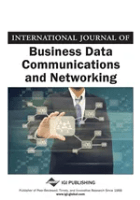
International Journal of Business Data Communications and Networking
Unleashing the Potential of Data in Business Networks.The International Journal of Business Data Communications and Networking, published by IGI Global, stands as a pivotal resource in the fields of business and technology, particularly focusing on the interplay between data communications and network systems. With an established presence since 2005, this journal has been instrumental in disseminating research that bridges the gaps between computer networks, management information systems, and business practices. It holds a commendable position in the academic community, reflected in its Q3 rankings in both Computer Networks and Communications and Management Information Systems categories for 2023, alongside respectable Scopus rankings that underline its relevance and contribution to the field. While it operates on a subscription basis, the journal's commitment to quality research makes it an essential read for researchers, practitioners, and students eager to stay abreast of the latest developments and innovations. The journal aims to foster a deeper understanding of the complexities surrounding business communications and data networking, encouraging the advancement of knowledge and practical application in these ever-evolving domains.
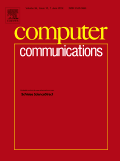
COMPUTER COMMUNICATIONS
Connecting Scholars through High-Impact ResearchCOMPUTER COMMUNICATIONS is a premier journal published by Elsevier, covering cutting-edge research in the field of computer networks and communications. With an impressive 2023 Scopus ranking placing it in the 95th percentile and classified as Q1 in its category, this journal embodies the forefront of technological advancement and scholarly excellence. Since its inception in 1978 and poised to continue until 2024, COMPUTER COMMUNICATIONS serves as an essential platform for disseminating high-impact research that advances our understanding of computer networking protocols, architectures, and applications. Although it is not an open-access publication, the journal provides various access options to ensure that its findings are widely circulated among researchers, professionals, and students. Through rigorous peer review and a commitment to fostering innovation, COMPUTER COMMUNICATIONS plays a vital role in shaping the future of communication technologies.

GetMobile-Mobile Computing & Communications Review
Advancing Insights in Mobile ComputingGetMobile-Mobile Computing & Communications Review, published by the Association for Computing Machinery (ACM), is a leading journal dedicated to the evolving field of mobile computing and communication technologies. With an ISSN of 2375-0529 and an E-ISSN of 2375-0537, this publication serves as a vital resource for researchers, professionals, and students, providing insights into the latest advancements, trends, and challenges in mobile technology. The journal covers a comprehensive range of topics, including but not limited to mobile networks, communications protocols, mobile applications, and edge computing, making it invaluable for those in academia and industry alike. Although specific metrics such as impact factor and H-index are currently unavailable, GetMobile is recognized for fostering innovative research and promoting knowledge exchange in mobile and computational communications. As the field continues to grow, this journal remains pivotal for disseminating impactful studies and practical applications that drive the future of mobile technology.
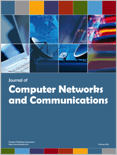
Journal of Computer Networks and Communications
Transforming Communication Through Rigorous ScholarshipThe Journal of Computer Networks and Communications is a premier open-access journal published by HINDAWI LTD, dedicated to advancing the field of computer networks and communications. With an ISSN of 2090-7141 and an E-ISSN of 2090-715X, this journal has been accessible to researchers since its inception in 2011, promoting widespread dissemination of knowledge in this rapidly evolving discipline. Based in Egypt, the journal's editorial standards are upheld through a rigorous peer-review process, contributing to its strong academic reputation. As of 2023, it holds a commendable Q2 ranking in Computer Networks and Communications and a Q3 ranking in Information Systems within its category quartiles. According to Scopus rankings, it occupies the 141st and 143rd positions in its respective fields, showcasing its relevance and influence in the academic community. The journal's mission is to publish high-quality research that addresses contemporary challenges in networking technologies and systems, making it an essential resource for researchers, professionals, and students seeking to innovate and excel in these fields.
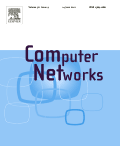
Computer Networks
Exploring Cutting-Edge Networking TechnologiesComputer Networks, a prestigious journal published by Elsevier, stands at the forefront of the field of computer networking and communications. Established in 1978, this journal has consistently provided a robust platform for the dissemination of high-quality research, currently holding a Q1 ranking in its category as of 2023, specifically within the Computer Science - Computer Networks and Communications sector, placing it in the top 10% of journals in its field (ranked #38 out of 395). With a focus on innovative networking technologies and fundamental theories, Computer Networks showcases original research articles, comprehensive reviews, and significant advancements that drive the academic community and industry practices forward. Although it follows a non-open access model, it remains widely accessible through various academic databases, ensuring that professionals, researchers, and students can engage with its valuable content. The journal's commitment to excellence contributes to its high impact factor, solidifying its role as an essential resource for those aiming to stay at the cutting edge of networking research.

EURASIP Journal on Wireless Communications and Networking
Exploring New Horizons in Wireless TechnologyThe EURASIP Journal on Wireless Communications and Networking, published by Springer, stands as a pivotal platform dedicated to advancing the field of wireless communications and networking. With an ISSN of 1687-1472 and E-ISSN of 1687-1499, this Open Access journal has been disseminating high-quality research since 2004, ensuring broad accessibility for scholars and professionals worldwide. Maintaining an esteemed position in the academic community, it is classified in the Q2 quartile for 2023 across critical categories including Computer Networks and Communications, Computer Science Applications, and Signal Processing. The journal's performance is reflected in its Scopus rankings, which place it in the 73rd percentile for Computer Networks and Communications and the 72nd percentile for both Computer Science Applications and Signal Processing. With a focus on innovative research and practical applications, the EURASIP Journal is an essential resource for anyone seeking to contribute to or stay informed in the dynamic landscape of wireless communication technology.
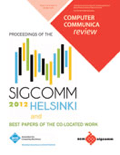
ACM SIGCOMM Computer Communication Review
Bridging theory and practice in computing communication.ACM SIGCOMM Computer Communication Review, published by the Association for Computing Machinery, stands as a premier journal in the fields of Computer Networks and Communications as well as Software. With its ISSN 0146-4833 and E-ISSN 1943-5819, this journal is dedicated to disseminating significant research findings and advancements that shape the future of computing communication, featuring a rich archive of articles spanning from 1995 to the present. Recognized in the 2023 category quartiles as Q2 in both its core areas and achieving commendable Scopus rankings (#92/395 in Computer Networks and Communications and #108/407 in Software), the journal provides authors, researchers, and industry professionals a platform for exchanging ideas, innovations, and methodologies. While it does not operate under an open access model, the publication remains vital for understanding the evolving dynamics of computational communications. Whether you are a seasoned researcher or an emerging scholar, ACM SIGCOMM Computer Communication Review is an essential resource for staying at the forefront of this dynamic field.

Internet Technology Letters
Transforming Ideas into Impactful Technologies.Internet Technology Letters, published by John Wiley & Sons Ltd, is a dynamic and rapidly evolving journal that focuses on the innovative applications and developments within the realms of Artificial Intelligence, Computer Networks and Communications, Information Systems, and Software. With its E-ISSN 2476-1508 and a defined convergence period from 2018 to 2024, this journal seeks to address emerging trends and critical challenges confronting the digital landscape today. Recognized in the Q3 quartile range across multiple computer science categories in 2023, it serves as a valuable resource for researchers, professionals, and students seeking to advance their knowledge and stay updated on significant technological advancements. While currently not an open-access journal, Internet Technology Letters holds a prominent position on platforms like Scopus, ranked within the middle percentiles, reflecting its contribution to the academic community. The journal aims to foster connectivity between academia and industry, encouraging submissions that promote interdisciplinary collaboration and innovation. By creating a platform for sharing groundbreaking research, Internet Technology Letters plays a crucial role in shaping future technological landscapes.

WIRELESS PERSONAL COMMUNICATIONS
Bridging Theory and Practice in Mobile NetworkingWIRELESS PERSONAL COMMUNICATIONS, established in 1994 and published by Springer, is a vital resource for researchers and professionals in the fields of Computer Science Applications and Electrical and Electronic Engineering. With an impressive impact factor, this journal has achieved a Q2 ranking in both relevant categories as of 2023, demonstrating its significance in advancing knowledge and fostering innovation in wireless communication technologies. The journal encompasses a comprehensive scope, covering topics such as mobile networking, signal processing, and communication protocols, making it essential reading for academic and industry stakeholders. Although primarily subscription-based, it remains committed to disseminating high-quality research that shapes the future of wireless technologies. Housed in the Netherlands, WIRELESS PERSONAL COMMUNICATIONS continues to foster a global dialogue among scholars and practitioners, contributing to the burgeoning field of personal and mobile communication systems.

Infocommunications Journal
Connecting Knowledge in Computer Science and EngineeringInfocommunications Journal, published by the SCIENTIFIC ASSOCIATION INFOCOMMUNICATIONS, stands as a vital resource within the fields of Computer Science and Electrical and Electronic Engineering. Since its inception in 2011, this journal has consistently contributed to the discourse surrounding innovations and research trends in these dynamic disciplines, culminating in a converged operational span through 2024. With an ISSN of 2061-2079 and an E-ISSN of 2061-2125, it is indexed in Scopus, showcasing impressive rankings within its categories, notably a Q3 classification in both Computer Science (miscellaneous) and Electrical and Electronic Engineering as of 2023. Although the journal operates under a non-open access model, its contributions are nonetheless essential for researchers and professionals seeking to advance their knowledge and practice. Situated in Budapest, Hungary, at Kossuth Lajos Square 6-8, 1055, the Infocommunications Journal is committed to fostering a rich scholarly exchange, making it an indispensable platform for those invested in the frontiers of technology and communication.